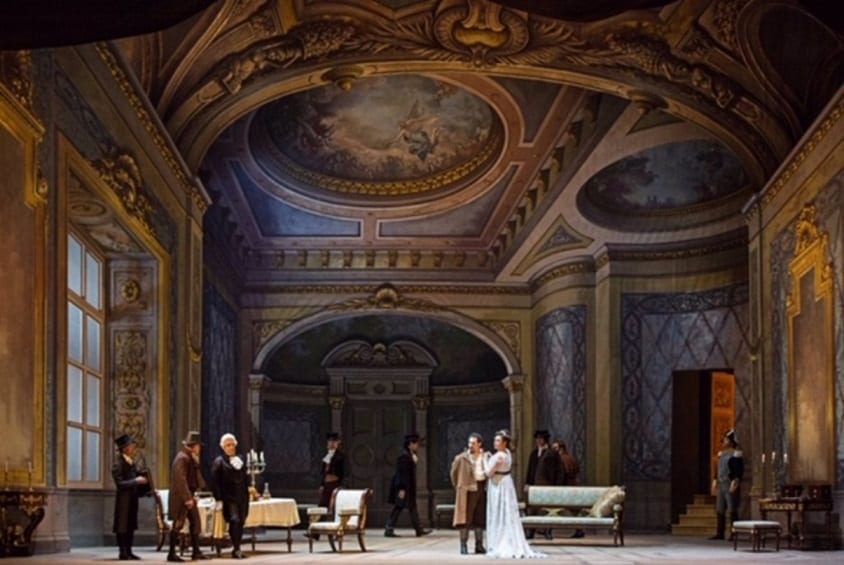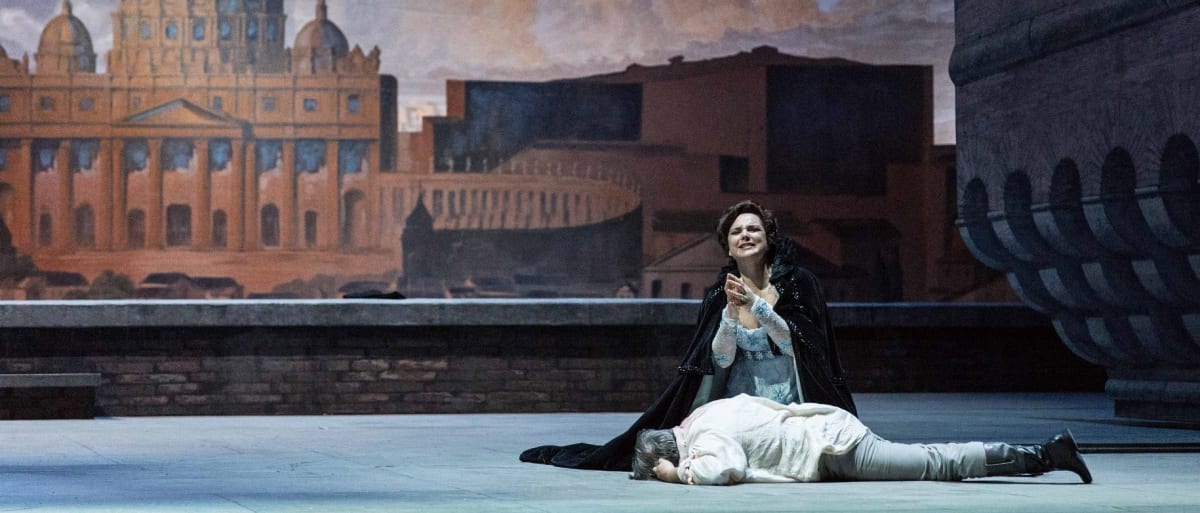119 years after the great success of the opening night of Tosca in Rome, the audience in Tel Aviv was privileged to share a very similar experience. First and foremost thanks go to the spectacular design, based on the original drawings of Adolfo Lowenstein (1854-1928) which were rediscovered by The Rome Opera House only recently. His work includes three original sketches of the stage, 49 original costumes, and four sets of props. This is exactly how Puccini watched his hit-to-be on the stage for the first time. Their impression is outstanding, to the extent that when the curtain was raised in the beginning of Act II a spontaneous roar of ovation crossed the Opera House.
Another source of excitement was the orchestra under the baton of Daniel Oren. It was definitely an artistic climax of their joint together. After watching several productions of Tosca around the globe, let alone listening to numerous great recordings of the opera, I did not expect it to be such a moving and revealing experience. One could easily imagine Mr. Puccini sitting in his box and screaming: Bravo!

Tosca is based on a play by the French writer Victorien Sardou. The action takes place in Rome in 1800. Following the French revolution, the Napoleon army invaded Italy in 1796, entering Rome almost unopposed two years later. In the center of the plot are effortless attempts by the corrupt police chief Scarpia to spend a night with the famous opera singer Floria Tosca. When Cavaradossi, a painter and the lover of Tosca, is arrested for giving shelter to the escaped Roman prisoner Angelotti, Scarpia offers to save Cavaradossi’s life in return for Tosca’s favours. She agrees after a promise by Scarpia to fake Cavaradossi’s execution. Once the police commander writes a note allowing Tosca and her lover to leave the country immediately thereafter, Tosca stabs Scarpia to death. She rushes out to bring Cavaradossi the good news and instruct him to act as if he is truly shot by the squad. While she discovers that her lover was actually shot to death, Scrapia’s cops discover that their boss was murdered. Tosca escapes and jumps to her death from the roof the St. Angelo Castel.
The performances of the cast in all the three leading roles lived up to the ideal conditions set for them by the visual and musical excellence around. Iano Tamar was an ideal choice for the role of Tosca with her beautiful soprano. Her Vissi d’arte aria was truly moving. Gustavo Porta was a very pleasant surprise with a warm but powerful tenor and great sensitivity to the nuances that Puccini so skillfully put into the role. Let alone his exciting take of E lucevan le stele. No need to compare to any Pavarotti or Carreras, you just need to listen and enjoy. Sebastian Catana was a convincing and vicious Scarpia.
All three of them, and the rest of the cast, should be very grateful to Director Alessandro Talevi. His dramatic preparation and guidance resulted in an excellent theatrical performance, such an essential but sometime neglected part in operatic productions. He reminded me of the running story about an opera director who ask his cast to spell out the libretto of their roles without the music. So many of them fail… In this production you could be sure that the text gets its deserved attention and respect. When combined with music from heaven –can you ask for more?

